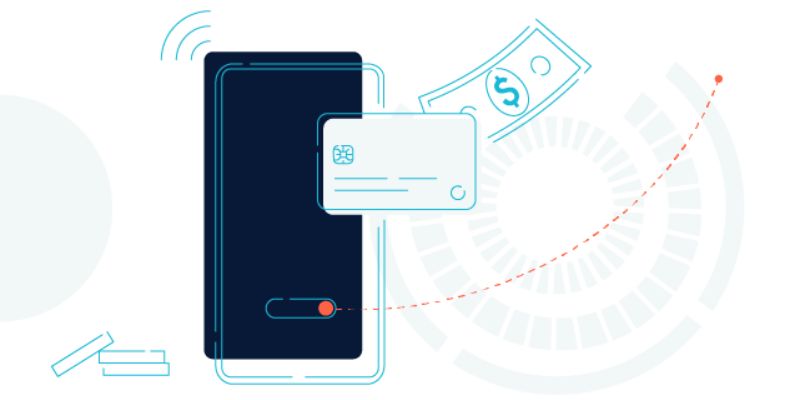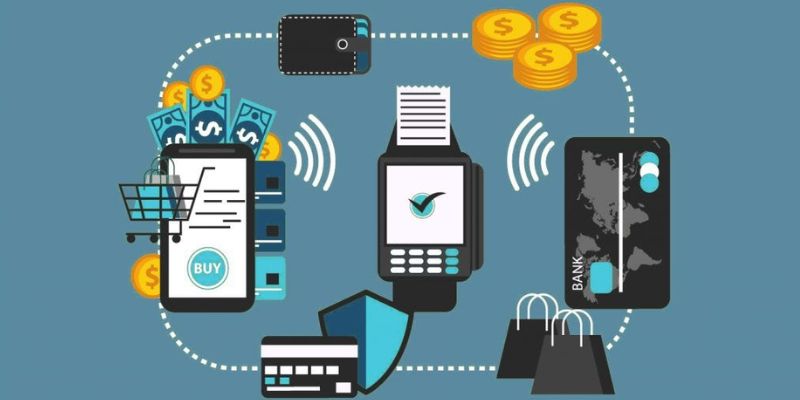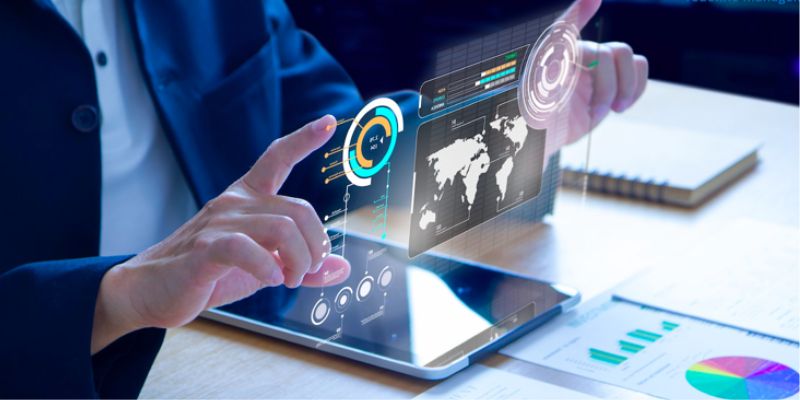Future of mobile payment platforms: it’s not just another tech buzz. Every tap, scan, and swipe today hint at a bold, digital tomorrow. This is about more than convenience; it’s about a shift transforming our wallets and the way we spend. We’re leaving the days of cash and cards behind, moving towards a world where your phone pays for everything, quickly and safely.
From QR codes to NFC tech, shopping and sharing money is hitting warp speed. You may not notice how your morning coffee pay-wave is part of this giant leap. But hold onto your smartphone, because secure biometric approvals like a thumbprint or a quick selfie are becoming the new normal. And that’s just the beginning.
Now, I dive into how this wave of innovations is not just changing shopping, but also stirring up fintech and regulations on a global scale. Get ready to travel the world cash-free and send money in a snap, because when it comes to mobile payments, the future is already in your hands.
The Rise of Contactless and QR Code Transactions
Evaluating the Surge in NFC and QR Code Utilization
Look around and you’ll see a change. People tap phones on readers to pay. This is NFC. NFC stands for Near Field Communication. It lets devices talk when close together. When phones talk to payment readers, no cash or cards need to swap hands.
NFC tech gets better every year. Shops, cafes, and buses use NFC. People like it because it’s quick and easy. Say goodbye to digging for cash or swiping cards. With NFC, just tap and go. It’s that simple.
QR codes are these cool, square barcodes. They are popping up everywhere. They are easy to use too. You just scan them with your phone. This tells your phone what to do or where to go online. For paying, they work great. No contact needed.
Both NFC and QR codes are part of mobile payment trends in 2023. Folks are using them more than ever. These methods of paying are clean and fast. And they help keep your details safe.
Understanding User Adaptation to Tap-and-Go and QR Scanning
Changing how we pay takes time. Remember how we used to rent movies? Now we stream them. Tap-and-go and QR scanning are the same idea. We’re moving to simpler ways to do things.
Why are these ways of paying catching on? One big reason is that they’re safer. You don’t have to touch anything but your own phone. Security is big too. With tap-and-go, your phone talks to the reader with a secret code. Even if someone listens in, they don’t get your card info. With QR codes, the scanner takes you to the payment without sharing your info.
Smartphone wallets adoption is up. That’s because people trust in digital wallet security. More folks understand that these wallets are often safer than physical ones. If you lose your phone, you can lock it. If you lose your wallet, you can’t lock your cash.
Biometric authentication payments are next level. You use your fingerprint or face to approve buys. This stops others from spending your money. And you don’t have to remember passwords.
Contactless transactions growth is changing how we shop. We can buy things with watches or fitness bands. These wearable payment devices are handy.
Mobile payments are not just a cool trend. They are a big part of our future. We’re heading toward cashless societies impact. This means less cash around. It makes things easier to track.
Getting used to new tech is part of life. Mobile pay in developing nations is even growing. People find this way of paying safe and useful.
So, NFC, QR codes, smartphone wallets, and biometric checks are here to stay. They make shopping fast, easy, and safe. And as we keep finding new ways to make paying even better, trust these methods to lead the way.

Securing the Future: Biometrics and Tokenization
The Role of Fingerprint and Facial Recognition in Payment Security
We pay with phones more than ever now. It’s fast and handy. But how safe is it? For sure, we’ve got tech that checks who you are before paying. It’s called biometric authentication. This uses things like your fingerprint or face to make sure it’s really you.
Let’s talk fingerprints. Tapping a sensor with your finger is all it takes. Lots of phones and apps use this method. It’s about keeping your money safe. Your fingerprint is unique, just like you. So, when you use it, your phone knows it’s not a stranger trying to pay.
Now, what about face recognition? You just look at your phone, and it knows you. No need to type passwords. It’s easy for you but tough for bad guys to trick. This protects your cash and your phone too.
Biometric methods like these are here to stay. They’re getting better and helping us feel secure when we pay with our phones.
How Tokenization is Reshaping Secure Transactions
There’s a cool word in payments these days — tokenization. It’s a big deal. It turns your card number into random numbers and letters. This token then safely travels through the payment process. It’s like a secret code for your real card details.
When you pay, tokenization hides your sensitive info. If hackers get this token, it’s useless to them. That’s why it’s a game-changer for safety in mobile payments. Every time you use your phone to pay, tokenization protects your real card number.
And the best part? It works with those quick tap-and-go payments and even online shopping. With tokenization, you can shop without worry. It’s building trust in mobile payments like never before.
In a world where paying with a phone is normal, these smart ways keep our money safe. They bring us peace of mind every time we tap to pay. This all shapes a future where we can say bye to cash and hello to secure, quick, phone payments.
So, there you have it. We’re stepping into a world with safer mobile payments. Thanks to biometric checks and tokenization, we can look forward to a future where paying with our phones is as normal as carrying keys. And just like keys, these technologies unlock a whole new level of security for us all.

Navigating the Regulatory and Fintech Landscape
Global Regulatory Shifts Impacting Mobile Payments
Have you ever wondered why you can’t use certain mobile payments everywhere? Laws play a big part. Countries have rules that keep payment safe. These rules are changing. They affect how we pay with our phones.
In 2023, we see new laws for mobile payments. They focus on user safety and fair play among banks. For example, in Europe, there’s a law called PSD2. It opens up the market for more payment services. This means more choices for you and me.
These laws also help stop fraud. They make sure payment companies check who their users are. This is good for us. It means fewer chances for bad guys to steal.
Fintech’s Role in Pioneering New Payment Solutions
Now, let’s talk about fintech. Fintech is technology that makes finance better. Think of your phone as a wallet. That’s fintech in action.
Fintech firms are always coming up with new ways to pay. They’re behind cool stuff like paying with a selfie. They make it easier to split a dinner bill with friends, through P2P apps. These firms drive change. They challenge old ways and make paying faster and better.
They’re also big on using data smartly to know what we might want to buy. And they work hard to protect us from fraud. They use things like AI to spot if something’s wrong.
As fintech keeps growing, it’ll bring even more changes and new ways to pay. But, it will always bump into rules. The trick is to follow the rules while still inventing.
In short, as mobile payments keep getting popular, the rules will change to keep up. This keeps our money safe. And fintech? It stays ahead, shaping our future money moves. It’s a fast-paced dance of new ideas and laws. It’s all to make sure our tap, scan, and pay is easy, quick, and, above all, safe.

Cross-Border and P2P Payments: What’s Next?
The Expansion of Mobile Payments Across Borders
Mobile payments are now going global. This means you can send money fast, even to far places. Imagine buying a gift for a friend in another country with just a few taps on your phone. It’s like magic, right? Businesses are also happy. They can sell to customers anywhere without a fuss. This is because of tech like NFC and smarter payment rules. But, what drives this change? People want ease and safety when they pay. And, we see more folks trusting their phones to move money.
Yet, mobile payment growth faces some tough roads. Every country has its own payment rules. This can confuse and slow things down.
So what’s being done? Big mobile payment names are working together to make things smooth. They aim to let you shop or sell anywhere without a headache. There will be no more pulling your hair out dealing with hard payment steps. This is good for all of us.
Peer-to-Peer Systems: The Evolving Face of Personal Transactions
Now, let’s talk about peer-to-peer, or P2P. P2P means sending money phone to phone with no bank in the middle. Easy, right? Apps for this are popping up like daisies. Many people love them because they are simple and fast. You can split dinner bills or pay the babysitter without cash.
But how safe is P2P? That’s a burning question. With each click, your hard-earned cash is on the line. This is where things like codes and face scanning come in. They make sure it’s really you sending or getting money. It’s like your money has a secret handshake that only you know.
Predicting the future of P2P, we think it will grow a lot. More people will use it every day. We’ll see friends and family zip money around without worry. Even traders in small towns in distant lands will join in.
So, what does this mean for you? It means the world is at your fingertips. Be ready for new ways to spend and get money. With a few taps, you could support a craftsman across the ocean. Or, just pay your buddy back for lunch. The days of fumbling for change are fading. A brighter, smarter payment world waits.
Get set for a journey with mobile payments. Your phone is becoming your wallet, your bank, and your money buddy. And we’re just scratching the surface. We’ll keep watching as more people wave phones instead of cash. It’s an exciting time, and I can’t wait to see what’s next!
We’ve seen how tap-and-go and QR scans are changing how we buy things. They’re everywhere now, and they make life super easy. But with cool tech like fingerprint and face checks, we’re making sure every payment is safe. And these aren’t just fancy add-ons – they’re must-haves that keep our money secure. We also dived into laws and how those smart fintech folks are always cooking up new ways for us to pay without a hitch.
Looking ahead, paying someone in another country is getting just as simple as sending a text. Sharing cash with friends? That’s becoming a piece of cake too, with all these fresh ways to send money.
So there you have it, friends – paying for stuff is getting a facelift, and it’s all about making sure you can do it with a tap, a look, or a smile. Keep your eyes peeled, because this is just the start. Mobile payments are going places, and they’re taking us with them!
Q&A :
What are the upcoming trends in mobile payment technology?
With the rapid evolution of fintech, we’re poised to see significant advancements in mobile payment technologies. Future trends include increased adoption of contactless payments, integration of biometric authentication for enhanced security, the rise of blockchain and cryptocurrency payments, and the expansion of mobile wallets to include loyalty programs and other value-added services. These innovations aim to streamline transactions, making them faster, more secure, and more convenient for users worldwide.
How will mobile payment platforms impact banking and finance?
The growth of mobile payment platforms is expected to have a profound impact on the banking and finance sector. Traditional banking institutions are likely to partner with, or develop, their own mobile payment solutions to retain customers and meet the demand for digital services. Mobile payments are also expected to promote financial inclusion by providing underbanked populations with access to digital financial services. Furthermore, as mobile payments grow, banks and financial institutions will need to adapt to changes in consumer behavior, regulatory requirements, and technological advancements.
Will cryptocurrencies become a standard feature in mobile payment apps?
Cryptocurrencies have the potential to become a standard feature in mobile payment apps as they offer an alternative to traditional banking and fiat currencies. With the growing interest in digital currencies and blockchain technology, many mobile payment platforms are considering integrating cryptocurrency transactions to cater to a tech-savvy audience. However, widespread adoption will depend on regulatory clarity, stability of cryptocurrency values, and the development of user-friendly platforms that can handle such transactions seamlessly.
Can mobile payment platforms ensure data security and privacy?
Data security and privacy are top priorities for mobile payment platform providers. As technology evolves, these platforms are continuously enhancing their security measures, employing end-to-end encryption, tokenization, and strict compliance with regulations such as GDPR and PCI DSS. Future mobile payment solutions may also leverage advanced technologies like AI and machine learning to predict and prevent fraud. However, users must also remain vigilant and follow best practices to protect their personal information.
How might the integration of AI and machine learning influence the future of mobile payment platforms?
The integration of AI and machine learning into mobile payment platforms is set to revolutionize the way payments are processed and secured. These technologies can provide personalized customer experiences, improve fraud detection algorithms, and optimize payment processing operations. AI can analyze vast quantities of data to identify spending patterns and provide insights to both users and financial institutions. Machine learning can adapt over time to detect new types of fraud, ensuring that mobile payment platforms remain robust against evolving security threats.

